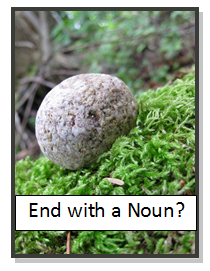 Who
Who: Students of any age
What: Write a story based on a series of pictures.
I love using these “Bad Parenting” pictures as a writing prompt. The stories students write are generally creative and fun.
How:
PREWRITING:
Invite your students to study the pictures, asking a list of W and H
questions—who, what, when, where, why, how—and answering with as much
detail as possible, orally or on paper.
Note: The teacher
need not be the one to think of and ask the questions. Allowing
students to brainstorm their own questions is a valuable learning tool
as well.
Here are some of my questions.
What are the ducks’ names?
How many ducklings are there in the first frame? The second? The last?
If the ducks were personified, what would they be saying?
Where are they coming from?
Where are they going?
What is happening outside the borders of each picture?
What is the weather like?
When Mama Duck looks in the grate, what does she see?
What happened before the first picture?
What happened after the last picture?
What is Mama Duck thinking?
Once
students have studied the pictures and answered their questions, they
may be ready to write. Let them. Others may need additional props. If
so, you may want to offer graphic organizers to help them see their
story develop. Maybe a
beginning/middle/end graphic organizer would be useful. This
story map or this
story map may also be just what they need.
DRAFTING:
Once students are ready, release them to capture these pictures in
words as creatively and imaginatively as possible. Editing comes later,
so they need not be hindered by conventions now.
REVISING: When the first draft is finished, commend your students but also remind them that there is more work to do.
There are many ways to approach the revision part of the writing
process and, with time, I hope to include many ideas on this site. For
now, let's look at some of
Ruth Culham's writing traits:
ideas, organization, voice, sentence fluency, and word choice. Choose
one (or as many as your students can handle) to address. You will find
an excellent starting point with these revision sticky notes
here. (Included is one for "Conventions," which you can use for EDITING.)
PUBLISHING: The process is complete; now it's time to celebrate the product.
Add it to a collection of other pieces and make a coil bound book. Make
a spiffy copy, including the pictures, and share it with Grandma. Consider including it in the comments for others to read!
Note: This post contains an affiliate link.




























